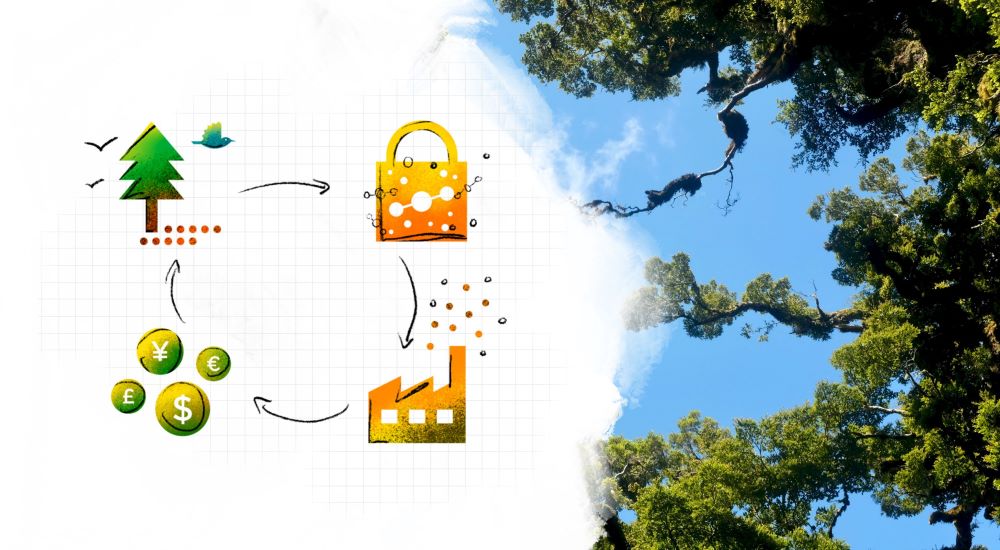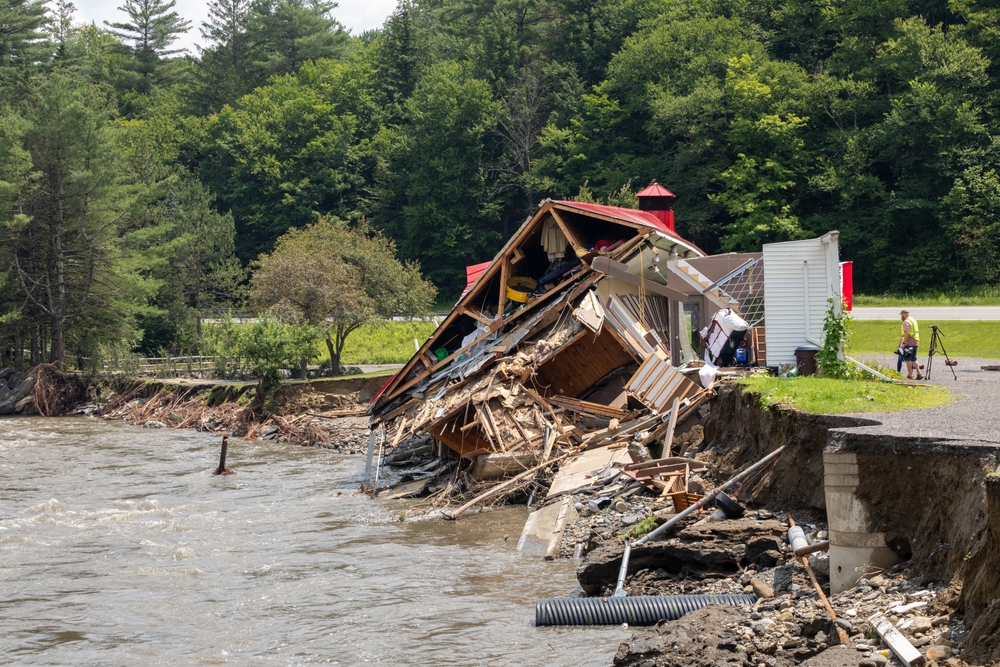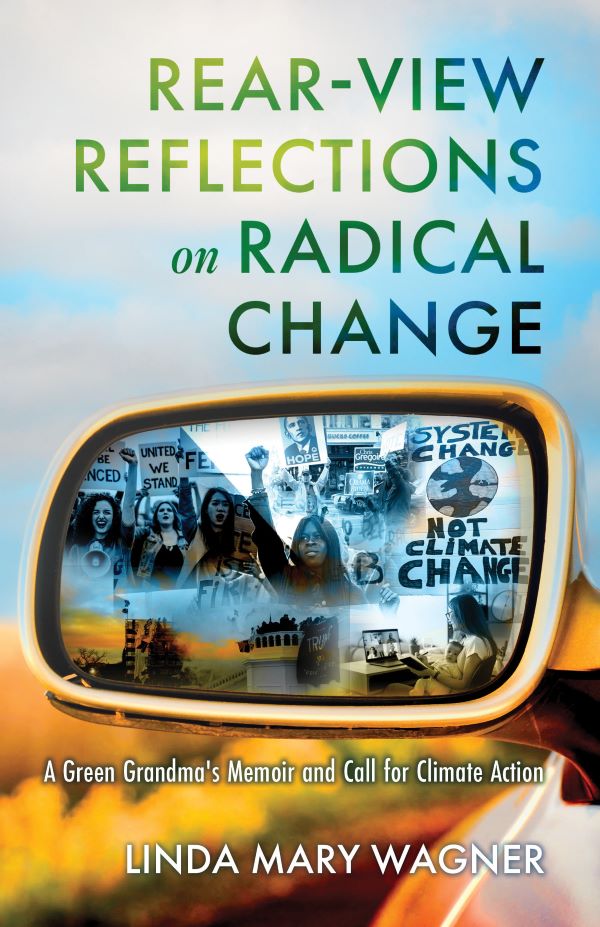One of the big questions at the December 2023 COP28 Climate Summit was whether the participating nations would finalize international regulation of “carbon offsets.”
What does carbon offset mean?
Carbon offsets, as defined by the U.S. General Accounting Office (GAO) in 2008, are “reductions of greenhouse gas emissions from an activity in one place to compensate for emissions elsewhere—(they) are a way to address climate change by paying someone else to reduce emissions.” The idea began when an American utility company, aiming to be a good environmental corporate citizen, sought to offset its carbon emissions in the U.S. by investing in energy plants in developing countries designed to be carbon neutral.
This idea has been stretched by fossil fuel proponents who argue they can achieve “net zero” emissions and offset the harm from fossil fuels by planting “a trillion trees.” Many climate activists find this to be a dangerous argument.
Should individuals buy carbon offsets?
If you buy an airline ticket and you see this offer, “For a few extra dollars, you can make your flight carbon neutral,” is the environmental benefit worth the money? It might be, if this “carbon offset” truly contributes to a net zero carbon emissions goal.
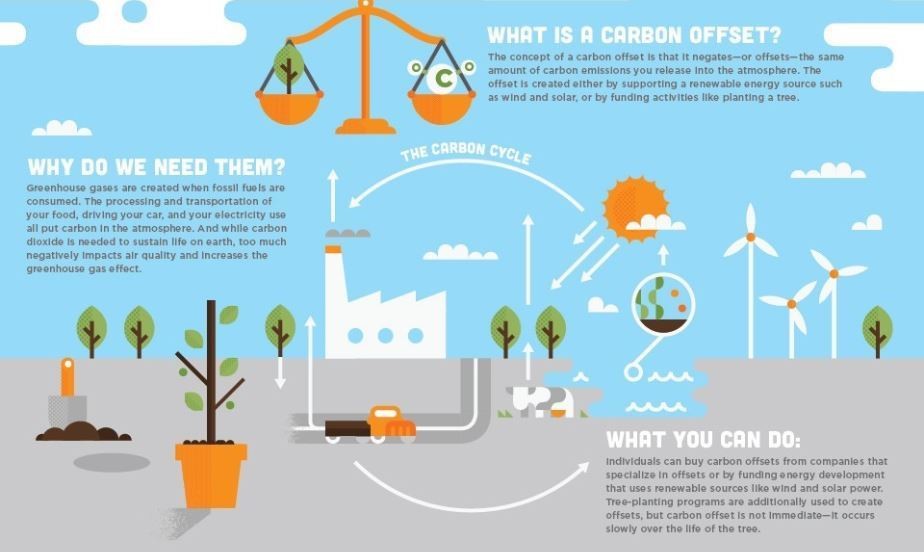
But numerous scientific and journalistic studies have concluded that nearly all unregulated, voluntary carbon offset transactions are worthless and some, in fact, may be fraudulent. There is no national or international regulatory agency that verifies claims made within this voluntary market.
How do you trade carbon offsets?
The MIT Climate Portal explains how offsets are turned into tradeable instruments:
“Carbon offsets are tradable “rights” or certificates linked to activities that lower the amount of carbon dioxide (CO2) in the atmosphere. By buying these certificates, a person or group can fund projects that fight climate change, instead of taking actions to lower their own carbon emissions. In this way, the certificates ‘offset’ the buyer’s CO2 emissions with an equal amount of CO2 reductions somewhere else.”
What is the biggest problem with carbon offsetting?
If you are an individual who hopes to contribute to a real reduction in greenhouse gas emissions, it is difficult to know whether any carbon offset you purchase in the voluntary market has true value. There are companies who will gladly take your money and offer you an offset to sell to another company. Too often, the value of these offsets is strictly a public relations ploy, empty of real environmental consequence.
Without regulation or certification, carbon offsetting has become a prime example of “greenwashing,” that is, claiming to be carbon neutral or net zero by buying carbon offsets from another company or country, when there is no real reduction in emissions by either party.
Is carbon offsetting always greenwashing?
Some climate experts say that any offsetting of carbon emissions only slows progress toward ending our reliance on fossil fuels. Others argue that economic reality must allow for the use of offsets during a transition away from fossil fuels.
Those who promote a voluntary market, such as carboncredits.com, offer arguments to landowners who may want to become sellers in that market:
“Farmers, ranchers, and landowners can produce and sell carbon offsets by capturing and storing emissions. They do this using carbon farming and carbon sequestration processes, which involve implementing practices that remove CO2 from the atmosphere by converting the gas into organic matter within the soil and eventually into plants. Once absorbed, the CO2 helps restore the soil’s natural qualities—simultaneously enhancing crop production and reducing pollution.”
What are the types of carbon offsets?
Some governments have established a mandatory or compliance market for carbon credits, with verification of measured reductions in greenhouse gas emissions. The voluntary market has developed partly in response to regulation. The accounting firm, KPMG, points out, “Voluntary markets function independently of compliance markets, and the credits traded cannot be used to meet the legal and regulatory obligations placed on organisations by compliance markets.”
The assumption that promoters of the voluntary market make is that both sellers and buyers are acting in good faith, truly hoping to reduce their carbon footprint in the long run. Carboncredits.com goes on to explain why other players in this market want to buy offsets.
“Before you learn how to make money by using your land to produce carbon offsets, it’s important to understand why a market for carbon offsets even exists. And to get there, you have to start with carbon credits. Carbon credits are traded on the compliance carbon market. Here’s how it works…Many countries and some states have passed “cap-and-trade” regulations, which limit the number of tons of CO2 a business can emit in a year. These tons are allotted as carbon credits.“
Who profits from carbon offsets?
Sellers of carbon offsets may realize a profit if they can sell at a high enough price. Buyers may protect their profits. As carboncredits.com argues, “Even companies that work as hard as possible to shrink their carbon footprint might find that the allocated emissions “cap” is not enough for their operations. They might be years away from substantial and compliant reductions in emissions, and they still have to keep operations going to make a profit in the interim. As such, they need to find a way to be able to emit more carbon than their cap without breaking the law.”
Are governments regulating carbon offsets?
Government regulation of carbon credits or offsets has increased significantly in recent years. The European Union (EU) has established a tightly regulated standard for evaluating carbon offset claims. The accounting firm, KPMG states, “The EU ETS (European Union Emissions Trading System) is the world’s largest cap and trade scheme, covering just over a third of the EU’s greenhouse gas emissions. The UK ETS went live on 1 January 2021, replacing the UK’s participation in the EU ETS. Other ETSs operate in Australia, Brazil, China and, at a state level, in the US, although the substance of different schemes can differ.”
Canada and the State of California governments have set controls on carbon credits. The Canadian government states, “The Canadian Greenhouse Gas Offset Credit System Regulations apply across Canada to proponents of projects located in Canada that reduce greenhouse gas (GHG) emissions or increase GHG removals from the atmosphere, that generate real, additional, quantifiable, verifiable, unique and permanent reductions, and that are implemented using a federal offset protocol.” These standards, adopted in June 2022, apply across Canada.
In October 2021, California released information about its carbon offset standards, stating, “Project requirements within the Cap-and-Trade Regulation and the Compliance Offset Protocol for U.S. Forest Projects (Forest Protocol) are designed to ensure that all offset credits are real, permanent, and additional to any reductions otherwise required by law or that would occur in a conservative business-as-usual scenario…The Program ensures credits are permanent by requiring projects to monitor, report, and verify carbon stocks for at least 100 years following credit issuance.”
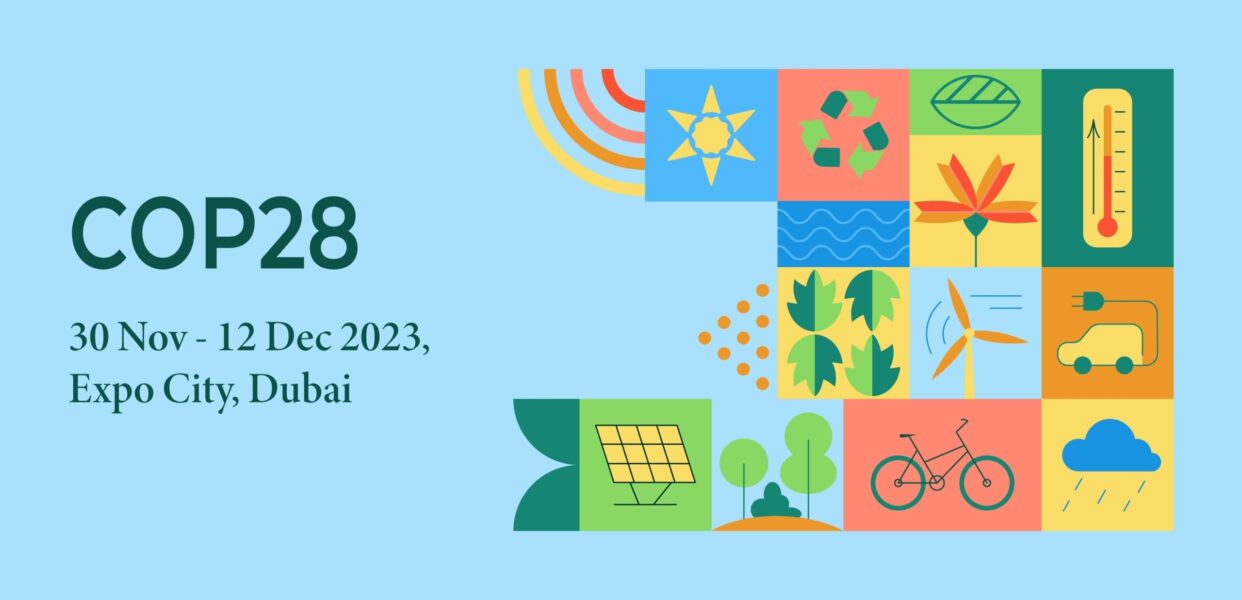
COP 28 ended with
no agreement
on carbon offset regulation.
COP28 discussions of carbon offset regulation
Key players at COP28 wanted to establish clear global requirements for carbon offsets, also known as carbon credits. Among those interested in the COP28 outcomes are risk management lawyers who advise clients on the business risks of climate change and increased regulation of carbon emissions. At the international firm Katten Muchin Rosenman LLP, Associate Catherine E. O’Brien and Partner Christopher A. Cole provided this update about the COP28 offset discussions on the firm’s research platform at Lexology.com:
“Carbon offset negotiations failed – No deal was reached in talks to establish new rules allowing for the launch of a central system for countries and companies to begin offsetting their carbon emissions and trading those offsets after the deal was rejected by the European Union, Mexico, and the Latin American Ailac bloc. Reuters reported that the EU was pushing for rules that would put carbon offsets in line with the high standards set by its own emissions trading system and give the centralized oversight body less discretion in decision-making. It also wanted additional oversight on bilateral trading. The technical working groups will now begin negotiating again in 2024, with the next chance for a deal at COP29, in Azerbaijan in 2025…the future will be marked by global efforts to curtail the impacts of industrialization, bringing increased legal and reputational risks associated with poor sustainability practices across all sectors of the economy.”
Will the private sector make carbon offsets accountable?
As the weather disaster risks of climate change have increased for businesses and their surrounding communities, the private sector has taken note of climate change reality. Some insurance companies, for example, have stopped offering coverage in California for wildfires after losses exceeded profits.
Similar changes appear to be coming to the carbon offset market. KPMG states, “Financial sector regulation of carbon emissions, trading and disclosure will develop given the fundamental need to reduce gross carbon emissions in order to manage the financial risks of climate change. It is likely that, in the short to medium term, carbon markets will become more highly regulated, in order to introduce greater consistency, reinforce the integrity of sustainability disclosures, and respond to stakeholders’ expectations that sustainability information should be transparent and comparable.”
Carbon offsets – the history and the bottom line
In an interview between the “veteran energy blogger,” Joe Romm and Volts podcast producer David Roberts, Romm tells the history of carbon offsets and why their value in the market has been plummeting for months. Romm, who has a PhD in Physics from MIT and has worked for the U.S. Department of Energy, is a senior research fellow at the University of Pennsylvania Center for Science, Sustainability, and the Media. In the podcast, Romm walks listeners through his recent investigative report on carbon offsets, a topic he has followed for years.
Some companies that once got a public relations boost from claims that they are “net zero” have run into a reputational and legal risk when the carbon offsets they tout prove to be imaginary.
Problems emerge for those selling carbon offsets
Even in cases where a country has documented carbon reductions, there are problems with selling the value of those reductions as offsets. Since the Paris agreement, all nations are supposed to be reducing carbon emissions to get to net zero. If Brazil captures and stores a billion tons of carbon and then sells it to the United States as an offset, that billion tons would be double counted if both nations claim it toward their net zero goal.
Along with all the lawsuits and exposes about voluntary carbon offsets, there has been an overwhelming drop in their market price. Challenges include the significant drop in the price of renewable energy projects that were often used to offset carbon emissions from countries or companies using fossil fuels. In addition, offsets called as “avoided emissions” – in which one party pays another party to NOT cut down trees, thus preserving those trees as carbon offsets – are impossible to accurately verify, especially in a world where forest fires are occurring more frequently.
Romm explains that, after the Glasgow Climate Pact in 2021, some environmental activist organizations initiated lawsuits against companies claiming to be “net zero” as a result of voluntary carbon offset purchases. The suits charge that these offsets are environmentally worthless and that the companies are knowingly engaged in false advertising. With no regulatory monitoring to certify that the offsets are legitimate, Romm says that both sellers and buyers “have an incentive to exaggerate” the value of offsets. In some cases, the seller’s claimed carbon reduction may be entirely made up.
“We do want to stop deforestation,” Romm told Roberts, “But you don’t want to turn protecting forests into someone else’s license to pollute.”
“There is no net zero. There is only zero. There is no free lunch. Everyone is going to have to reduce their own emissions.”
Senior Research Fellow Joe Romm
Romm and Roberts agreed that in the wake of the Paris agreement, voluntary carbon offsets make less and less sense. With all nations committed to net zero, “If everyone has to go down to zero, then it doesn’t make any sense to sell off your cheap tons (of reduced or captured carbon). You’ve got to keep them for yourselves.”
Romm says the promises of negative emissions are either not scalable or they are myths that new research will explode.
“There is no net zero” Romm said. “There is only zero. There is no free lunch. Everyone is going to have to reduce their own emissions.”
Hear the entire interview on this Volts episode.
More information at What is a Carbon Offset? and Carbon Offsets | MIT Climate Portal.
This content was originally written on August 12, 2023, and has been updated for freshness, accuracy, and comprehensiveness.

